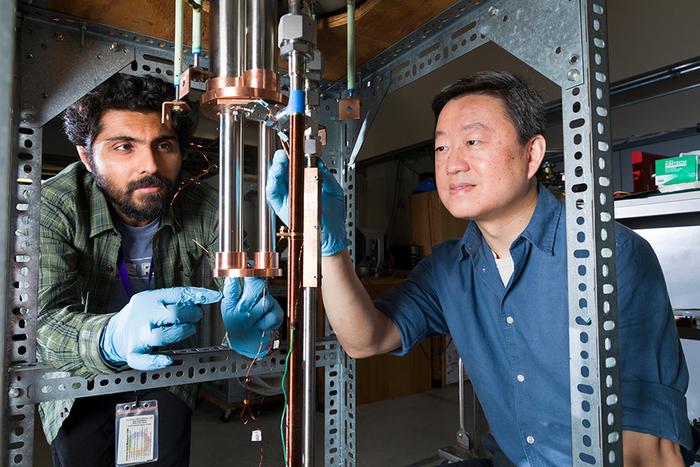A significant aspect of this research is the focus on creating a scalable, integrated system specifically tailored for a 100-passenger hybrid-electric aircraft. This novel approach combines hydrogen fuel cells with hydrogen turbine-driven superconducting generators, paving the way for a new generation of aircraft that can operate efficiently while minimizing environmental impact. The design brings forth a comprehensive strategy for safely storing, transferring, and utilizing liquid hydrogen, which conforms to the demands of various stages of flight, including takeoff, cruising, and landing.
.adsslot_9MqfKI42AJ{ width:728px !important; height:90px !important; }
@media (max-width:1199px) { .adsslot_9MqfKI42AJ{ width:468px !important; height:60px !important; } }
@media (max-width:767px) { .adsslot_9MqfKI42AJ{ width:320px !important; height:50px !important; } }
ADVERTISEMENT
In this pursuit of optimization, the team meticulously adjusted several critical design parameters such as vent pressure, heat exchanger dimensions, and the configurations of fuel delivery systems. Through systematic investigation, they have identified a configuration that realizes a gravimetric index of 0.62, indicating that 62% of the total system mass can be utilized as hydrogen fuel—a notable advancement compared to conventional systems. This re-engineering adds substantial value to the feasibility of long-range hydrogen-powered flights.
Moreover, the thermal management capabilities of their design are groundbreaking. Instead of requiring a separate system for cooling, their methodology employs the ultra-cold hydrogen as an integrated cooling solution. The system channels liquid hydrogen through heat exchangers that efficiently extract waste heat from critical onboard systems such as superconducting generators. This thermal integration not only enhances overall system efficiency but also streamlines the aircraft’s hardware components, making the design less complex and more reliable.
However, managing the flow of liquid hydrogen poses additional challenges. The traditional mechanical pumps typically used in such systems often result in increased complexity and potential risks of unwanted heating. To address this, the research team has devised an innovative pump-free solution that uses tank pressure to regulate hydrogen flow. By utilizing controlled venting and gas injection methods, they can maintain optimal pressure and ensure precise hydrogen delivery based on real-time power demands throughout varying flight conditions.
Simulations conducted by the team highlight the system’s capability to deliver hydrogen at rates up to 0.25 kilograms per second. This performance rate is integral in meeting the substantial electrical demands required during takeoff or emergency situations. The strategic arrangement of heat exchangers enables the cooling process to be sequential, with the system first targeting components operating under cryogenic conditions before addressing warmer components. A precise preheating step ensures that hydrogen reaches optimal conditions prior to its introduction into fuel cells and turbines.
The research team not only conceptualizes but validates their innovative strategies within simulation frameworks, indicating promising applicability in real-life scenarios. Looking forward, the next phase involves constructing a prototype system to conduct real-world testing at FSU’s Center for Advanced Power Systems. This step is critical for refining their design further and validating its performance under practical conditions.
Subject of Research: Liquid hydrogen storage and delivery system for zero-emission aviation
Article Title: Liquid hydrogen storage, thermal management, and transfer-control system for integrated zero-emission aviation (IZEA)
News Publication Date: 8-May-2025
Web References: FAMU-FSU College of Engineering, Applied Energy
References: DOI – 10.1016/j.apenergy.2025.126054
Image Credits: Scott Holstein/FAMU-FSU College of Engineering
Keywords
Tags: cryogenic hydrogen storageFAMU-FSU College of Engineering researchhybrid-electric aircraft designhydrogen delivery systemhydrogen fuel cells integrationinnovative aircraft power systemsliquid hydrogen utilizationscalable aviation technologiessuperconducting generators in aviationsustainable aviation fuel solutionsthermal management in aircraftzero-emission aviation technology




